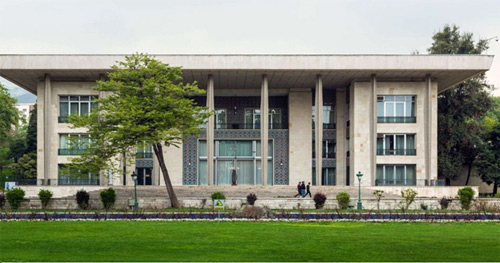
The Niavaran Palace Complex is a historical palace complex situated in Shemiran (northern Tehran), Iran. It consists of several palace buildings and monuments dating back to the Qajar and Pahlavi eras.
The complex traces its origin to a garden in the region of Niavaran, which was used as a summer residence by Fath-Ali Shah (1772–1834) of the Qajar Dynasty.
A pavilion was built in the garden by the order of Naser ed Din Shah (1831–1896) of the same dynasty, which was initially referred to as Niavaran, and was later renamed Saheb Qaranie. The pavilion of Ahmad Shah Qajar (1898–1930) was built in the late Qajar period.
During the reign of the Pahlavi Dynasty, a new palace named Niavaran was built for the imperial family of Mohammad Reza Shah (1919–1980). All of the peripheral buildings of the Saheb Qaranie, with the exception of the Ahmad Shahi Pavilion, were demolished, and the present-day structures were built to the north of the
Saheb Qaranie. The Ahmad Shahi Pavilion was then used as an exhibition centre for presents from world leaders to the Iranian imperial monarchs.
The interior designing of the library was designed by architect Aziz Farmanfarmayan. It has dissimilar features from the point of view of architecture and constructional structure, and was built based on the contemporary architecture prevailing in the 1970s.
The building's design was materialized with a combination of bronze and special glass. About 300 well-lit cylinders supply the needed lighting of the library.
The library was fully reorganized after twenty five months of practical and hard attempt.


